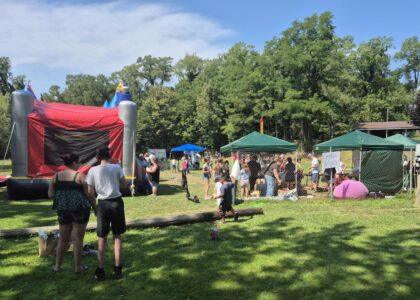Planning Commission Discusses Proposed Jackson-Taylor Park Zoning Changes
Jason Kulaszewski, the city’s new principal planner, recently made the case why the city should proceed with zoning changes in the area surrounding Jackson-Taylor Park – a proposal City Council members were discussing Monday night.
“There’s several businesses over there such as Weitsman’s Scrap Yard, there’s a heating and plumbing (business), so this district that we’re proposing be a C-1 commercial, there’s already several commercial uses in this space that was zoned R-2 for some reason, and what we’re trying to do is go back and address that issue, and essentially have the zoning better reflect the type of land use and uses that are there now,” Kulaszewski said.
Kulaszewski also addressed that building new housing in this area is extremely difficult, based on found contamination in the land in that area. He added that in order to make it easier to redevelop and use some of the warehouse space that’s already there, the zoning update will allow for commercial building uses there to be built or put in the existing vacant buildings.
“There’s no housing there right now except for on the edges, which we did adjust after feedback from some residents that live in that zone to essentially exclude the housing from this change,” Kulaszewski said. “So we’re keeping the housing that’s there already in an R-2 district and just changing the district that has that heavier, industrial/commercial use.”
There will be no residential areas in the area now, following the adjustments that were made.
Planning Commission members asked about the difference between neighborhood commercial and community commercial zoning districts, to which Kulaszewski said the neighborhood C-1 commercial allows for the same uses as an R-2 commercial, but also allows for closed commercial spaces. Community commercial allows for a little more intensity of use, like manufacturing and larger types of businesses. A C-1 zone allows for smaller businesses like office spaces or a coffee shop.
“It regulates more of the potential traffic that would come with whatever the use will be and … it keeps the use less intense,” Director of Development Crystal Surdyk said.
Kasie Foulk, city deputy development director, said she thought the community commercial would allow for things like gas stations, and that the reason they did not want to go any farther than a C-1 zoning is because of the nearness to the river and protecting that area from things like gas stations and mechanics shops. Surdyk added that the reason the department wanted to make this change now instead of waiting for the planned overall zoning code overhaul is because there is opportunity now for some businesses to come in and take over some of the commercial spaces that are not currently in use. These businesses would use the buildings for more types of commercial uses that the department would like to see there, she said.
This will include places like the fitness center that came into a recent planning commission meeting and was presented.
“I want to be really clear, we’re not going through this process for one particular project,” Surdyk said. “He is one of several that we’ve had come to us.”
Surdyk said that a number of projects are in process or being completed in this area right now, so making this change in tandem with those supports the revitalization of that area, and can help the department make better decisions for that area going forward.
Additionally, the area is in a Local Waterfront Revitalization Program area, so the planning commission will continue to have an active role for every proposed project. An LWRP review will need to be done for every project, and Surdyk said no oversight will be given up with this change. It also means that not a lot of new buildings will probably be built in the area because of there being so much wetland area there, and new businesses will most likely go into already existing spaces, Surdyk said.
While this change is looking to be adapted by the planning commission and is set for the city council voting session at the end of the month, Surdyk said that does not mean parts of it cannot be changed as they move forward with the rest of the changes in the Comprehensive Plan.
“We want to make sure we are not pigeonholing ourselves into not being able to grow and evolve as a community,” Surdyk said. “The intent is to give us a little bit more flexibility in some areas, streamline processes so we’re not getting in our own way, and to make sure we’re still able to provide oversight, which applies to all of you, throughout these processes without being our own worst enemies.”
The commission discussed if Weitsmans would look to expand with this change, which was noted to not be allowed in a C-1, and that this change would also not make it so someone cannot build a house around there either.



